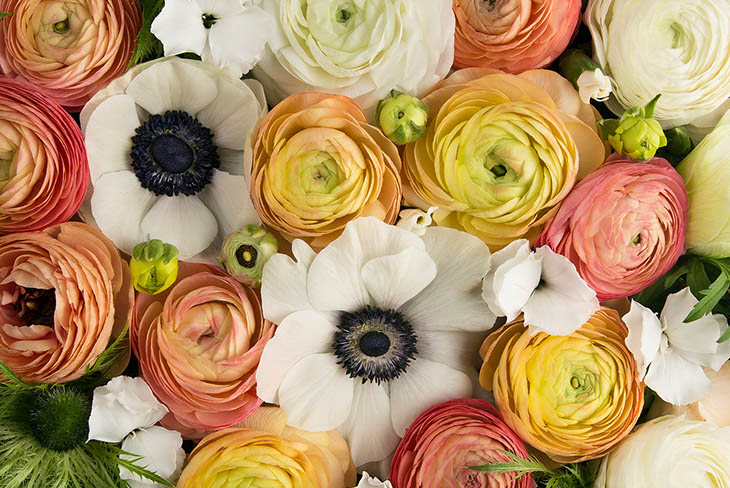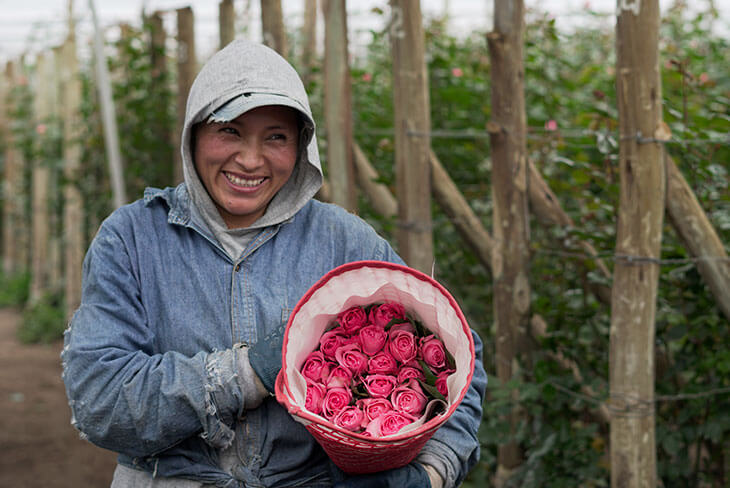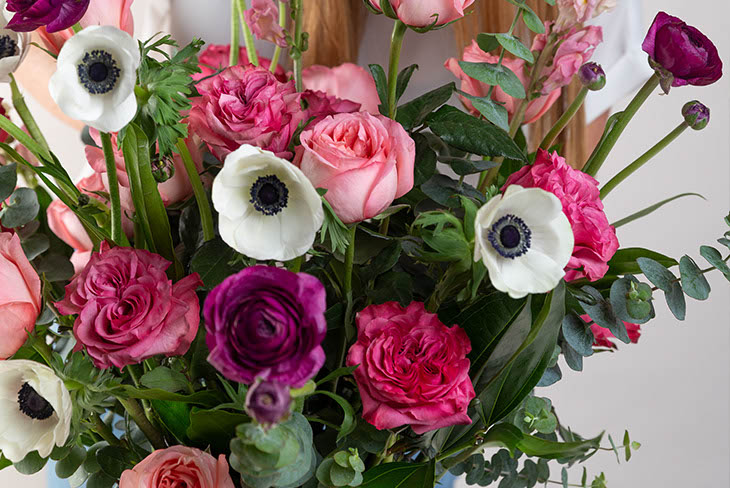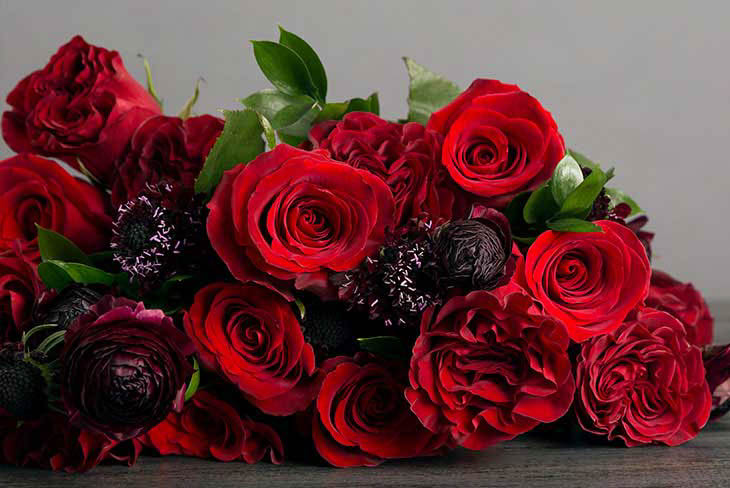When creating a bouquet, think of them as personas. People tend to focus on the color, but the shape is what really gives a bouquet its character and creates a mood.
Just as a shirt looks different if it’s tucked in or loose, how we give (or don’t give) a bouquet its shape will change the whole look. Here are the three key bouquet shapes to understand.

The Perfectionist: The round, hand-tied bouquet shape. Need DIY instructions? We got you.
Think of Anna Kendrick pursing her lips and tucking perfect hair behind her ear. Everything is flawlessly coiffed and neat. This type of bouquet is the most traditional and is usually round, with the flowers tucked tightly into place with little space between them. The flowers stay on one plane rather than poking out at varying heights.
If you want to really go for that neat and orderly look, we suggest you go keep all the flowers one color. Looking for something even more uniform? Use a single type of flower in just one color for that serene, minimalist effect.
The “Let it All Hang Out:” This is the asymmetrical contrarian little rebel to “The Perfectionist.”
While the previous look thrives on order and structure, this one loves to mess with balance, defy gravity, and embrace asymmetry. It’s often easiest to arrange this in a vase or with aids such as a design egg or chicken wire, since it’s likely to get a little unruly.
With these shapes, you want to disrupt roundness and order with an asymmetrical shape. Rather than binding the bouquet tightly, ensure that there’s enough space so that flowers have air between them. Think about creating at least two to three levels, so that some flowers are a backdrop while others float above to create an ephemeral effect.
The “Middle Child:” A bouquet with a structured shape that lets her hair down.
Ah, the joys of moderation. This is often the space that people like to occupy in both life and flowers. With this shape, you may start by designing in-hand or in-vase. The key is to create either a round or asymmetrical shape and then add some balance.
If you start off with a round, hand-tied look, loosen your grip and add some textured pieces or curvy stems once you’ve created that structured base. Tuck them in here and there and make sure that they hover slightly above the base arrangement. Maybe add some flowy greens or grasses to the sides to create a touch of drama.
If you are arranging in a vase, you may still want to do the asymmetrical shape, but leave a little less space between the flowers by binding the bouquet tightly before returning it to the vase. You can also trim it a little to eliminate stems that fly a little too high above your base.
They say you can’t please everyone, but this bouquet style sure comes close.













